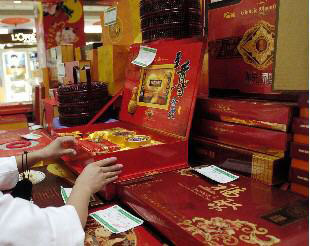The over-packaging of products ranging from food to cosmetics to books continues to plague China. The cost of excessive packaging is high, particularly to the environment, yet is all too often endured by consumers.
Over-packaging is a major source of trash. In today's China, nearly one-third of all household garbage comes from disposable packaging materials, more than half of it used to contain luxury items.
China already tops the list of countries that produce the largest amount of lavishly packaged garbage, resulting in a loss of 400 billion yuan (US$61.9 billion) every year.
A cultural problem
A mandatory standard to limit the over-packaging of food and cosmetics released by the State Administration of Quality Supervision, Inspection and Quarantineand together with the National Standard Committee has been implemented since April 1, 2010. But a plethora of products other than food and cosmetics are also packaged in an extravagant manner.
In one supermarket, a box of the latest Rizhao green tea sells for 800 yuan (US$124). Inside the package there are only 500 grams of tea in vacuum-packed tin foil, along with a glazed porcelain jar, a three-tier wooden box and an exquisite handbag. The price of the same green tea in simple packaging is several hundred yuan lower.
Many red wines are also much more expensive after being wrapped with silk fabric and placed in luxury gift boxes. Some customers complained that it is a waste to throw them away after drinking, but keeping the fancy trappings takes up too much space.
Many people admit that it is embarrassing to send a sparsely-packaged gift to friends, especially during holidays, which makes over-packaging a cultural phenomenon whose demand is difficult to resist.
A waste of resources
Recently, Wu Lianglun went to a nearby shopping mall to purchase some fine tea for an old friend visiting from abroad. Wu thought that simply-packaged tea might not be presentable, so he chose something lavish instead.
Wu gave the gift to his friend, who told him there was no way he could carry such a large tea box home on the plane, so they decided to open the package then and there. After removing an outrageous amount of wrapping materials, they finally got to the tiny portion of tea inside. Both were shocked by how much had been wasted in the packaging of such a small amount of tea.
This is a typical case of customers choosing to endure the high cost of unnecessary packaging, a waste of resources that continues to generate more garbage.
Companies should be more prudent with their packaging, and the public needs to be more rational about buying such products, in order to avoid aggravating an ongoing problem.


















